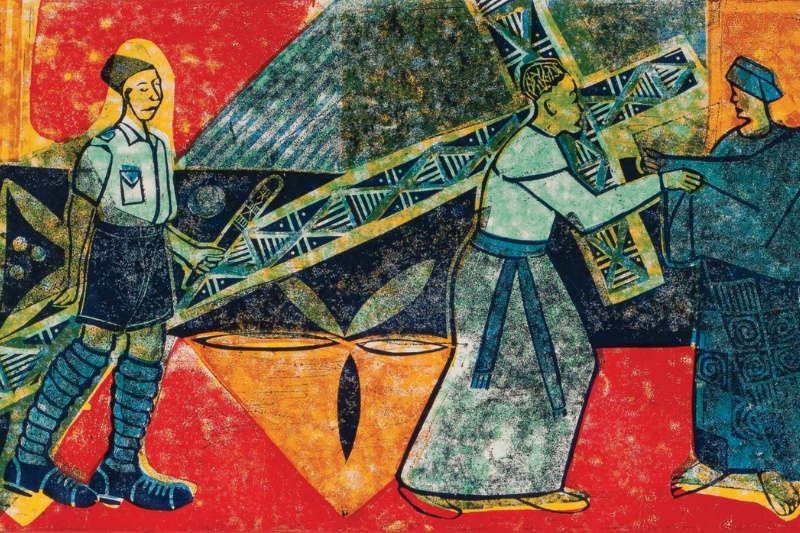Celebrating Bruce Onobrakpeya’s Legacy National Museum of African Art
Presenting “Bruce Onobrakpeya: The Mask and the Cross, an exhibition honoring the extraordinary career of Bruce Onobrakpeya, a key player in Nigerian modernism,” the Smithsonian’s National Museum of African Art is pleased to offer Onobrakpeya accomplished major commissions for the Catholic Church, including his well-known “Fourteen Stations of the Cross” series, during the period of 1966 to 1978, which is represented in the exhibition on view from June 21 through January 21, 2026.
A Confluence of Faith and Traditions
Unique mix of Christian imagery, Nigerian folklore, and West African traditions makes Onobrakpeya’s artwork well-known. His works reinterpret biblical narratives in Nigerian settings, including Jesus in traditional Nigerian clothing and Roman soldiers with British military uniforms. Postcolonial Nigerian art and spirituality is redefined by this mix of Western inspirations with African cultural aspects.
Janine Gaëlle Dieudji, guest curator, emphasizes the exhibition’s cultural value and its part in honoring Onobrakpeya’s contributions to world art and spirituality. His creative approach to art is shown by his attempts to show Christianity in a way Nigerian viewers could relate to.
Influence and History
Beyond his own creations, Onobrakpeya has had influence. Works from the museum’s collection by contemporaries like as Rufus Ogundele, Adebisi Fabunmi, Yinka Adeyemi, Solomon Irein Wangboje, and Oluwole Olayemi—who likewise examine issues of faith and African history—are on display. For example, Ogundele’s works show the hybrid character of Nigerian modern art by combining Yoruba images with Christian narratives.
Emphasizing the museum’s goal of investigating cross-cultural influences and displaying several cultural identities, John K. Lapiana, interim director of the National Museum of African Art, notes This conversation between Onobrakpeya and his contemporaries highlights the conversational aspect of artistic activity beyond geography and eras.
Keep Reading
Onobrakpeya, Bruce
Bruce Onobrakpeya, who was born in 1932, started his creative path at Nigerian College of Arts, Science and Technology in Zaria. Aiming to decolonize visual arts by means of the “natural synthesis,” which combined African traditions with Western technology, he co-founded the Zaria Arts Society in 1958. Over his six-decade career, Onobrakpeya has invented fresh printmaking processes and greatly affected modern and contemporary art from West Africa.
About the Museum of African Art
Comprising more than 13,000 pieces spanning over 1,000 years, the Smithsonian’s National Museum of African Art is the only museum dedicated just to African art worldwide. Warren M. Robbins founded the museum in 1964 as a private entity aiming at fostering cross-cultural understanding. Over time, it has expanded to be a major component of the Smithsonian Institution.
“Bruce Onobrakpeya: The Mask and the Cross” is a thorough investigation of the junction in African art between faith, tradition, and modernism. Sponsored by Lilly Endowment Inc., this show aims to deepen guests’ knowledge of African art and its worldwide importance. See the website of the National Museum of African Art or follow the museum on social media sites for further information.
This page celebrates Bruce Onobrakpeya’s contributions to art and culture, therefore honoring his legacy that will be pertinent for many years to come.

